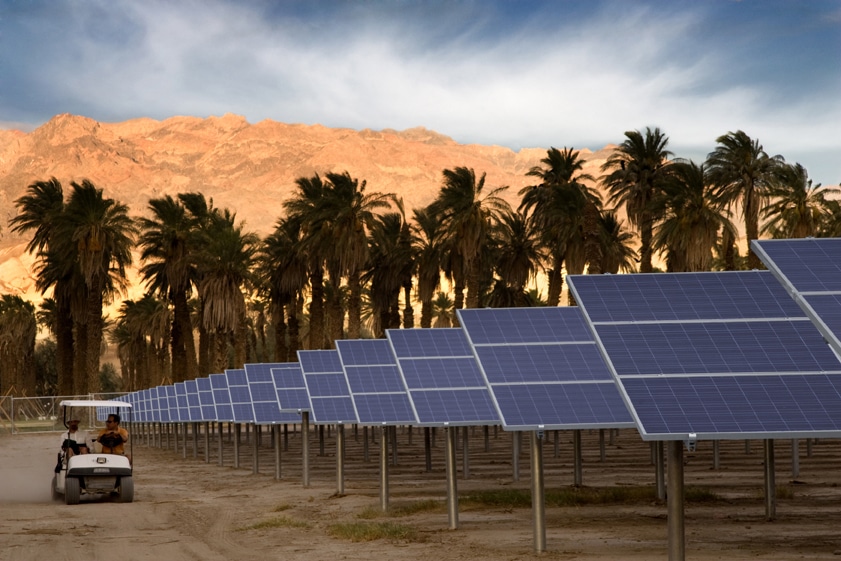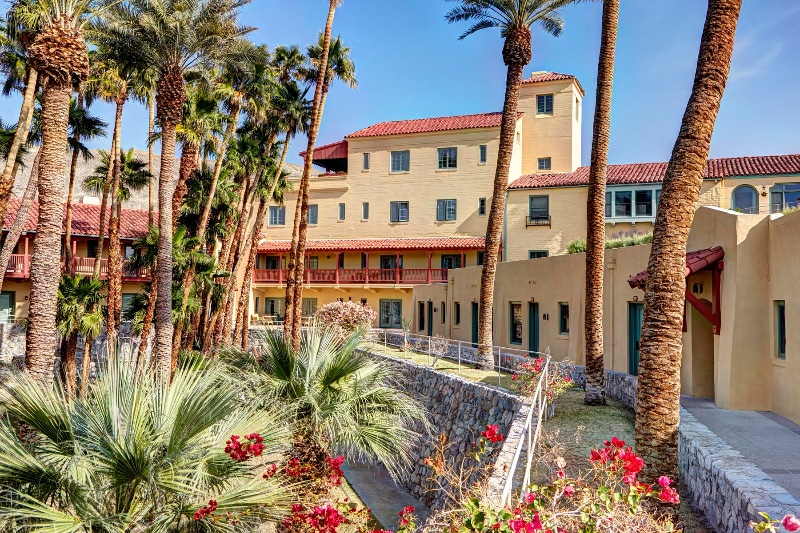
Furnace Creek Resort, a sustainably run oasis, is often referred to as the “lowest, hottest, driest area in North America.”
Macho is a 1,000 pound horse. He’s slowly kicking up dust while carrying me across Death Valley, the hottest place on Earth. In 1913 the temperature rose to a record setting 134°. We’re in the noonday sun, but, surprisingly, its only 65° out. With my jacket on I’m quite comfortable. The weather will not be the last thing to surprise me as I explore Furnace Creek Resort, a sustainably run oasis in what’s often referred to as the “lowest, hottest, driest area in North America.”
Just east of the Sierra Nevada Mountains, about two hours outside of Las Vegas, lies one of the most curious, and beautiful, natural landscapes in the United States. Covering 3,000 square miles Death Valley holds a stunning array of natural wonders: snow tipped 11,000 foot mountains, rolling sand dunes (as seen in the Star Wars films), metal-flaked rocky mountains tinged in bright greens, pinks, and blues, crackled earth salt basins, natural bridge canyons, sailing stone rocks that mysteriously move across the earth seemingly on their own, and the absolutely bizarre volcanic Ubehebe Crater. Star-gazers will appreciate its gold-tier Dark Sky park rating. As it’s one of the darkest places on the globe it has a near-pristine view of the night’s sky.
I was excited to explore the desert, and, aggressively curious as to how my hosts, the operators of Furnace Creek Resort were going to explain maintaining a golf course and massive swimming pools in the desert. So I headed out on horseback with my guide to see the grounds and learn more.

Furnace Creek Resort’s PV system has 5,740 solar panels can create more than 2.3million kWh/year.
Hidden Water
The desert area has 600 springs and ponds and one of the world’s largest aquifers, which helps explain the lush grounds packed with date trees and tall palms. Furnace Creek Resort wisely created a gravity-fed system to use this non-potable water responsibly throughout their historic grounds.
The pools use a flow-through system that brings the water through the pools, then through the gardens and golf course ponds. The golf course ponds then irrigate the entire golf course. It’s quite brilliant to see in action. The remaining water in the ponds has been used to create a Certified Audubon Cooperative Sanctuary for birds.
Renewable Energy Wins
We trot back to the ranch and I exchange Macho for a passenger van to ride out to see one of the resorts most exciting sustainable features. Furnace Creek Resort has adopted modern sustainable practices and it’s operator Xanterra Parks & Resorts has reduced solid waste 44% and water usage by 19% over the last 5 years. Waste vegetable oil is now converted to biodiesel for the golf course maintenance mowers. Natural green dye is used on the golf course to reduce watering. A modern Building Management System alone has reduced energy use by 10%.

To learn more about The Furnace Creek resort visit www.furnacecreekresort.com.
